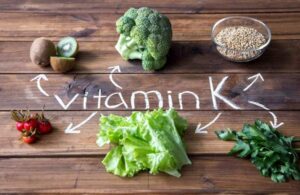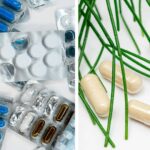What Really Causes Cavities, and What Can You Do to Prevent Them?

When you think about what causes cavities, the first things that come to mind are probably candy and not brushing your teeth after eating that candy.
While you’re on the money with these guesses, they’re not the only contributors to deteriorating tooth health. With billions of dollars a year spent on oral care products like toothpaste and mouthwash, we should have no cavities, right?
Well, according to a study published by the CDC’s National Center for Health Statistics,¹ 95 percent of Americans will have tooth decay by the time they hit retiring age. That tells us there’s something more to the story, and that cavity prevention should be a priority at every age.
It turns out that poor dental hygiene and sugar consumption are only two of many factors that lead to cavities and tooth decay. The health of your teeth is also highly dependent on nutrition, hormonal health, and genetics.
In this article:
Before getting into those factors, here’s a simple anatomy lesson.

The three layers of your tooth need your help to prevent cavities. Damaged layers are a source of what causes cavities.
The tooth has three layers. The outermost layer that you brush and have access to is the enamel. Beneath that is the dentin, which can be exposed if a cavity forms, with the nerve center as the innermost layer. Each component of the tooth needs to be kept in good health to prevent cavities.
What Causes Cavities?
Five main factors weaken your teeth and make them more vulnerable to cavities and decay.
1. SUGAR
Most people believe that a “sweet tooth,” ie too much sugar, is the main cause of cavities. In dental circles, this is known as the acidogenic theory, that the bacteria in your mouth eat the sugar that’s left over from sweet foods, jump-starting the fermentation process. This process produces acid, which, if not properly cleaned away, can sit on the tooth and erode the enamel.²
2. POOR DENTAL HYGIENE
Not cleaning the tooth properly allows the acidic environment to thrive. Look for toothpastes that do not have glycerin as an ingredient, as glycerin has the potential to coat teeth and make it more difficult for the tooth to remineralize and keep decay at bay.
“Glycerin makes it so that you can’t really get off what’s underneath that glycerin, so if you brush your teeth with something that contains glycerin, you’re not going to be able to get stains off,” says Dr. Michelle Jorgensen, DDS, of Total Care Dental in American Fork, Utah.

Tongue cleaners scrape off more oral bacteria than brushing, which gives you better breath!
Using a tongue cleaner can help eliminate many toxins that remain in your mouth as well, even after brushing. You may think your toothbrush can do the trick, but scraping the tongue reduces significantly more oral bacteria, which, if left behind, can reabsorb into the body and affect digestion, among other things. Besides removing bacteria that builds up, especially on the back of the tongue, you’ll have better breath as well.³
3. HORMONAL IMBALANCES
Hormonal imbalances can lead to cavities, as our hormones are responsible for regulating our lubricating saliva flow, and an altered flow can impair our natural ability to keep our teeth clean.
Pregnant women provide a great example; as you know, they experience significant hormonal changes in their bodies during this time, and with this change may come a mouthful of cavities as well.4 This can come as a big surprise, especially for women who have never had a cavity in their lives.
Additionally, there is a lymphatic-like system within the dentin layer. This circulatory flow pushes toxins out of the tooth to keep it clean, strong, and healthy, according to doctors Ralph Steinman and John Leonora, who discovered this self-defense mechanism of the tooth. However, if our hormones are out of balance, that flow can change directions, bringing toxins into the tooth rather than pushing them out.5
4. NUTRITION
Poor nutrition weakens teeth from the inside, making them more susceptible to cavities and other dental diseases. To keep your teeth strong, pay attention to your intake of these foods:
- Sugar: Sugar is not just a problem for the outside of your tooth, but internally as well. Once ingested, processed sugars and high-fructose corn syrup can contribute to disrupted hormonal health,6 among other health problems. Try to eat as little processed food as you can—there are numerous names for sugar that can be hiding in packaged foods that you may not realize because they aren’t technically sweets (pasta sauce, for instance). Look for names like maltose, dextrose, evaporated cane syrup, fructose, etc.
- Grains: Grains are a wonderfully nutritious food group, full of vitamins and minerals that are great for teeth. However, most people are unaware of what’s known as phytates, or phytic acid, which is a component of the grain’s outer layer that inhibits its ability to sprout and grow (great for shelf stability, not so much for bioavailability). Think of phytic acid as a gatekeeper to all the grain’s minerals that not only help it grow, but also help strengthen teeth. Once you soak the grains, the phytic acid is released and the doors open to the minerals that are now more bioavailable to your body, meaning you can more easily absorb and use them.7 If you want the biggest nutrient bang for your buck, your best bet is to soak your grains before eating.
- Fat-soluble vitamins: Fat-soluble vitamins (A, D, E, and K) help build up the tooth’s ability to resist decay, particularly Vitamin K2.8 One good source of K2 is pastured, grass-fed butter, or ghee if you prefer a dairy-free version. Fat not only helps you absorb the vitamins necessary for bone health, but Vitamin K2 also helps direct where calcium should go in the body, so it’s going towards strengthening your teeth rather than being deposited in places where it shouldn’t.
You can get vitamin K from lots of fruits, veggies, grains, and butter or ghee.
- Supplements: Dr. Jorgensen suggests supplementing your diet with silica, which is made from the perennial plant horsetail and can help remineralize teeth.9 She also highly recommends homeopathic cell salts like calc fluor and calc phos, particularly for pregnant or nursing women and growing children, to help build strong teeth and bones.10
5. GENETICS
It may be easy to chalk up weak teeth to heredity, but you’re not getting off the hook that way! Your genes are not your destiny. There’s a whole area of research known as epigenetics that essentially says, while you may be genetically predisposed to certain health conditions or traits (such as weak teeth), your lifestyle and nutritional habits can determine whether those genes are expressed. So taking into account all that we mentioned above can determine if your body flips the switch on or off.
Preventing cavities takes a bit more than simply brushing and flossing, but like most things, it can be made easier and less complicated when you eat a well-rounded, plant-based diet of whole foods with minimal processing. Knowing what causes cavities, and taking these five factors into consideration, will help keep your teeth strong and healthy and you (and your dentist) happy!
Read next: What REALLY Causes Gum Disease? A Holistic Dentist Explains

Disclosure: This post may contain affiliate links that help support the GSG mission without costing you extra. I recommend only companies and products that I use myself.
Sources
- Dye BA, Thornton-Evans G, Li X, Iafolla TJ. Dental caries and tooth loss in adults in the United States, 2011–2012. NCHS data brief, no 197. Hyattsville, MD: National Center for Health Statistics. 2015.
- Ireland, Robert. A dictionary of dentistry. Oxford University Press, 2010.
- Pedrazzi, Vinícius, et al. “Tongue-Cleaning Methods: A Comparative Clinical Trial Employing a Toothbrush and a Tongue Scraper.” Journal of Periodontology, vol. 75, no. 7, 2004, pp. 1009–1012., doi:10.1902/jop.2004.75.7.1009.
- Lukacs, John R. “Fertility and Agriculture Accentuate Sex Differences in Dental Caries Rates.” Current Anthropology, vol. 49, no. 5, 2008, pp. 901–914., doi:10.1086/592111.
- Steinman, Ralph R., and John Leonora. “Relationship of Fluid Transport Through the Dentin to the Incidence of Dental Caries.” Journal of Dental Research, vol. 50, no. 6, 1971, pp. 1536–1543., doi:10.1177/00220345710500062901.
- Arora, Sarika. “Is sugar sabotaging your hormones?” Women's Health Network, www.womenshealthnetwork.com/hormonalimbalance/hormonal-imbalance-caused-by-sugar.aspx.
- Gupta, Raj Kishor, et al. “Reduction of phytic acid and enhancement of bioavailable micronutrients in food grains.” Journal of Food Science and Technology, vol. 52, no. 2, 2013, pp. 676–684., doi:10.1007/s13197-013-0978-y.
- Southward, Ken. “A hypothetical role for vitamin K2 in the endocrine and exocrine aspects of dental caries.” Medical Hypotheses, vol. 84, no. 3, 2015, pp. 276–280., doi:10.1016/j.mehy.2015.01.011.
- Marchant-Turner, Renee. “Remineralization confusion... runs rampant in my mind. Where do I begin?” RDH Mag, The Dentistry Network, 1 Dec. 2009, www.rdhmag.com/articles/print/volume-29/issue-12/feature/remineralization-confusion-runs-rampant-in-my-mind-where-do-i-begin.html.
- Yurukova, Vasilka. “How to Use Tissue Salts for Osteoporosis.” Dr. Yurukova's Guide to Homeopathy, homeopathytoday.net/homeopathy/tissue-salts/item/88-how-to-use-tissue-salts-for-osteoporosis.
Posted in: Dental Health, Health Concerns, Lifestyle, Preventive Care


















No comments found, but you can be our first!